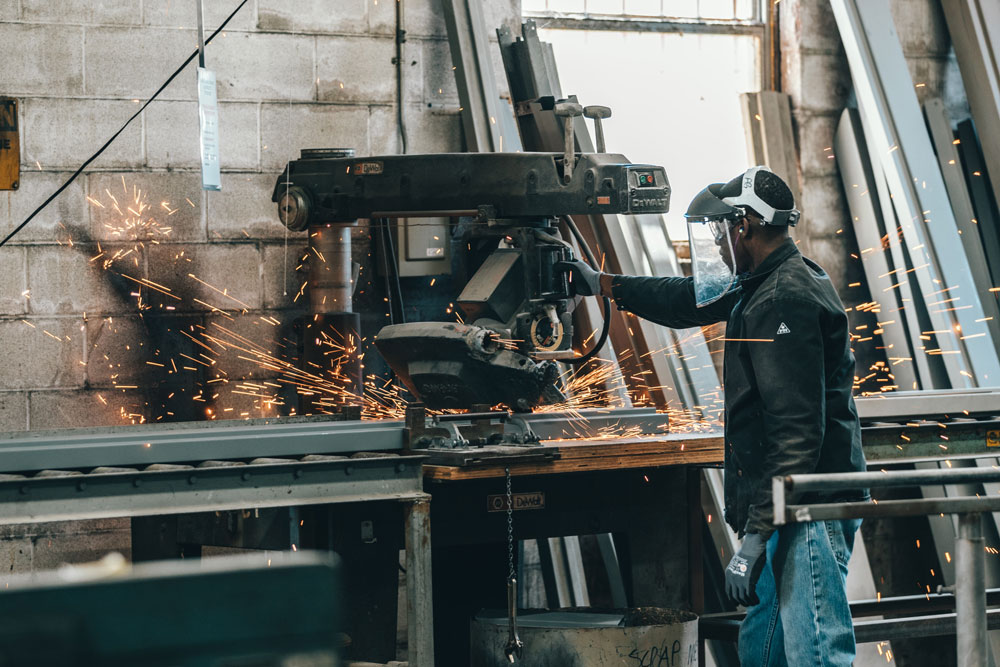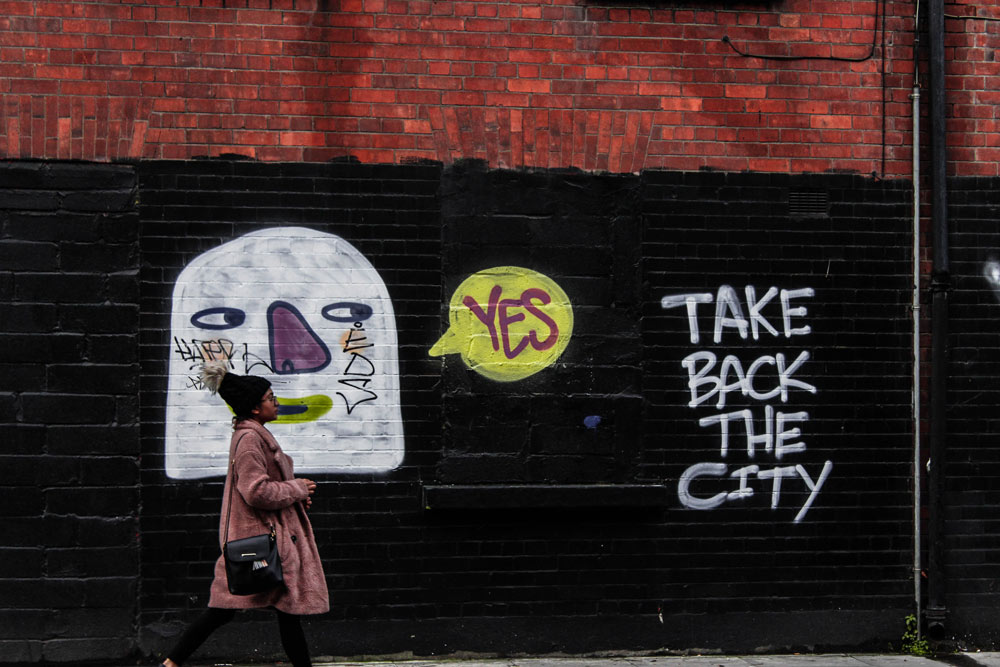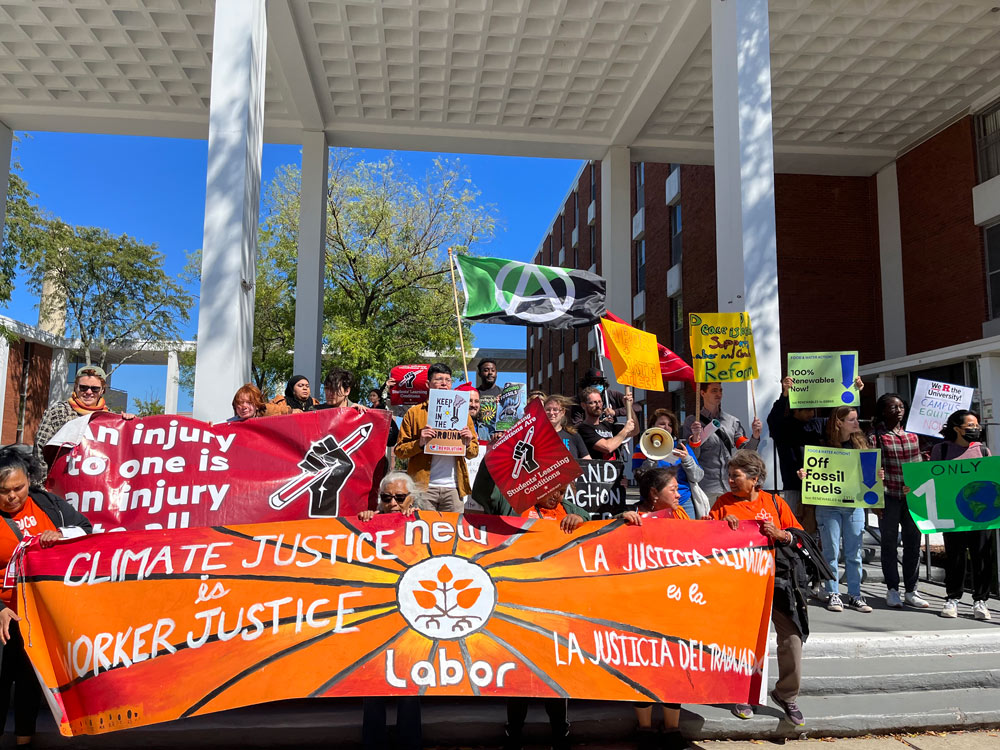
This article is the fifth installment in our series co-produced by Bargaining for the Common Good and NPQ, titled Building a Movement for the Common Good. In this series, we learn how and why Bargaining for the Common Good (BCG) is the right strategy for our times of social crisis, featuring extreme wealth inequality and declining democracy as well as a renewed attention to labor organizing and mass uprisings for racial justice. The authors reflect on how the labor and environmental movements must work together to secure both economic and climate justice in our time.
Moving the US to 100 percent electric vehicles (EVs) is an important part of addressing the nation’s top source of greenhouse gas emissions—the transportation sector. It is also an opportunity to reorganize the auto industry and win workplace democracy, especially in the South, where corporations and politicians have staunchly opposed union rights for workers with stark implications for worker wellbeing nationwide.
It’s only by coming together as a united labor, environmental, and racial justice movement that we will have enough power to take on corporations and their political allies and ensure that this transition benefits people working in the automotive industry, our communities, and our planet.
This is undoubtedly a huge task. However, our current economic and political situation contains some of the ingredients that will allow us to succeed. First, Americans across the country are fighting for policies like the Green New Deal and are committed to a “just transition” for workers. This has laid the groundwork to ensure that workers benefit from and do not bear the burden of our nation’s shift to an economy that is not dependent on fossil fuels. Secondly, the Biden administration is committed to creating union manufacturing jobs, as well as addressing racial injustice and fighting climate change.
But even with this wind at our backs and partial public investment in electric vehicles, greening our economy and growing union manufacturing jobs is a complicated issue. It’s only by coming together as a united labor, environmental, and racial justice movement that we will have enough power to take on corporations and their political allies and ensure that this transition benefits people working in the automotive industry, our communities, and life on our planet.
Working with the environmental and racial justice movements is not new for the United Auto Workers (UAW). In 1970, the UAW, together with the Sierra Club and other environmental organizations, sent a letter to Congress as part of a strategy to address vehicle emissions. They suggested that Congress “make national air pollution standards strong enough that they would, in effect, phase out the internal combustion engine by 1975.”[1] This was not a one-time action. The UAW’s visionary president, Walter Reuther, was an ardent fighter for workers’ rights, civil rights, and the environment. He fought to stop corporate pollution in the Great Lakes, where many UAW members lived, believing that everyone, not only the wealthy, should have access to clean air and water. Significantly, Reuther threw his clout behind the growing environmental protest movement, and under his leadership, the UAW was the largest financial backer of the first Earth Day in 1970. According to Earth Day founders, the event “would have flopped” without the union’s support.
Despite this history, the transition to EVs presents many challenges for both the UAW and the Sierra Club as we fight to green the economy and grow union manufacturing jobs. UAW members are rightly concerned that automakers will take advantage of the EV transition to de-unionize auto manufacturing and drive down workplace standards, which has led to an internal push to approach the EV transition with caution. And the Sierra Club is concerned that vehicle manufacturers are moving too slowly to decarbonize and are pitting workers against the environmental movement as a cover for their own lack of investment in electrification and their workforces.
These challenges are real and part of a history of worker and union animus in much of the auto sector. For example, in recent decades, automakers have deployed aggressive lawful (and unlawful) strategies to undermine the rights of workers to organize. To reduce costs, they’ve also replaced an increasing percentage of factory labor through temporary staffing agencies and outsourced to external suppliers the manufacturing of auto components that were once made in house. Often, these external suppliers are non-union and provide inferior wages and working conditions. The drop in union membership following these changes in the industry has allowed employers to drive down standards, resulting in stagnant wages, weaker rights in the workplace, deteriorating working conditions, and rampant use of temporary workers. In the US, real wages in the automotive industry have declined nearly 20 percent since 1990.
Without intervention to secure strong labor standards, the shift to electric vehicles is poised to accelerate these downward trends. EV startups like Tesla have been willing to break the law in order to silence workers who want a union, while newer EV manufacturers like Rivan and Lion Electric (a manufacturer of electric school buses) are rapidly expanding but have yet to agree to a fair process for allowing workers to freely join a union without intimidation. Similarly, about 20 new vehicle battery plants are being built in order to meet EV demand, but battery makers have not yet committed to matching the middle-class wage and benefit standards and voice on the job that current UAW members enjoy as part of collective bargaining agreements.
In recent years, more and more automakers and manufacturers have also been funneling investments to the South, where corporations and politicians have staunchly opposed union rights for workers with stark implications for worker wellbeing. In Alabama, for example, one of the country’s top auto producing states, 40,000 workers are employed at nonunion manufacturers like Mercedes, Honda, Toyota, and Hyundai, as well as at related auto-parts suppliers throughout the state. Despite being a manufacturing powerhouse, Alabama is the 6th poorest state in the country, with a general poverty rate of around 15 percent and even higher rates for Black (25.6 percent) and Latinx people (29.2 percent). Furthermore, Black communities in Alabama are heavily impacted by environmental racism. Last year, for example, the DOJ launched an unprecedented investigation under the Civil Rights Act to determine if Alabama health departments failed to provide basic sanitation to the predominantly Black community of Lowndes County, exposing residents to raw sewage and related infectious diseases.
The UAW and Sierra Club both know that if the growth of EVs results in real harm to workers, growing economic and racial inequality will not be the only outcome. Such harm will also embolden politicians affiliated with the anti-climate agenda to falsely equate greening the economy with lower working standards and fewer jobs, laying the groundwork for electoral defeats and slowing our ability to mitigate the climate crisis by further politicizing transition.
Sign up for our free newsletters
Subscribe to NPQ's newsletters to have our top stories delivered directly to your inbox.
By signing up, you agree to our privacy policy and terms of use, and to receive messages from NPQ and our partners.
With this shared understanding, the UAW and Sierra Club are committed to working together to make the transition to a zero emissions future one with fair standards for workers and communities in the US. On the legislative front, Sierra Club and other environmental groups pushed to secure auto industry standards in the Build Back Better Act, insisting that subsidies for EV purchases should prioritize automakers whose workers have the ability to collectively bargain with their employers on everything from wages to health and safety on the shop floor. Although we did not win everything we wanted from the legislative process, the coalition strengthened our ties and has given us clear direction on how we must proceed together on the transition to EVs.
The good news is that, given the transition to EVs, transportation is one of the few parts of the economy with the potential to actually create more union manufacturing jobs as it goes green. And we have the power to make this happen. Most automobile and battery makers want public subsidies, tax breaks, and infrastructure in order to switch to EVs and manufacture in the US, giving the government critical tools to influence company labor and community practices.
We know there is no path to unionize the auto industry in the South without a broad coalition of auto workers and environmental and racial justice organizations.
The UAW and Sierra Club also had a hand in helping to pass the Inflation Reduction Act (IRA), an essential tool to fight climate change and create and onshore more green manufacturing jobs. But despite the best efforts of our strong community-labor alliance, we were unable to secure provisions in the IRA that would ensure that public subsidies prioritize the creation of stable union jobs. (President Biden’s original proposal to include higher subsidies for autos built by union workers was struck down by conservative lawmakers.) This omission means we must work closely with the administration and elected leaders to evaluate each subsidy before it goes out the door and ensure that public dollars promote high-road manufacturing in the EV sector.
But we must go even further and hold corporations accountable for violating workers’ rights. This is especially important in the South, where elected officials collude with automakers to undermine unions and protect weak workplace standards. We know there is no path to unionize the auto industry in the South without a broad coalition of auto workers and environmental and racial justice organizations. Together we will take on the automakers and their political allies when they oppose democracy in the workplace and at the ballot box.
We are also tackling government procurement, and our work together is already paying off. In May, the UAW, American Federation of Teachers, Sierra Club, Chispa, Jobs to Move America, and others launched a collaborative effort to replace our nation’s 500,000 diesel school buses with union-built electric school buses. Doing so will reduce airborne pollutants that predominantly impact low-income students and communities of color, mitigate climate change, and grow union manufacturing jobs. This is proof that greening the economy can work for all.
Unfortunately, we have not yet succeeded in our joint efforts to shape USPS’ procurement of new delivery vehicles. Under Trump Postal Board appointee Louis DeJoy, USPS ordered at least 50,000 new postal trucks to be built, but only 10 percent were to be electric. DeJoy’s chosen manufacturer, Oshkosh Defense, was awarded the bid in part because its experienced unionized workforce has a history of producing quality products on time. But as soon as Oshkosh won the bid, they promptly set up a new facility far from their unionized plant in Wisconsin. Workers in this swing state are up in arms over losing the work, and both the UAW and several environmental groups have sued the postal service to stop the contract. Although USPS has since responded to pressure by increasing the number of electric vehicles under order, we’re fighting to ensure the new postal trucks are 100 percent union-built and 100 percent electric.
The membership of both the UAW and the Sierra Club share common concerns around growing economic and racial inequality, protecting our democracy, and addressing the existential threat to life on our planet. This spring, the UAW held a convention in Alabama with 60 auto workers from almost every automaker in the US (from Rivian and Tesla, to Volkswagen and Hyundai). The Sierra Club was proud to be there. As the work in Alabama and other vehicle producing states grows, we look forward to strengthening the bonds between auto workers and Sierra Club members.
By building community amongst our memberships, deepening our collaboration, and working together with local partners in the labor, environmental, and racial justice movements, we can seize this unique moment and build mass popular support to re-unionize and decarbonize vehicle manufacturing in a way that benefits workers, our communities, and our planet. This is an “all-in” moment, and we can’t do it alone.
Notes
- “Reforming the Auto Industry,” Give Earth a Chance: Environmental Activism in Michigan, website, https://michiganintheworld.history.lsa.umich.edu/environmentalism/exhibits/show/main_exhibit/pollution_politics/national-air-quality/reforming-the-auto-industry.











